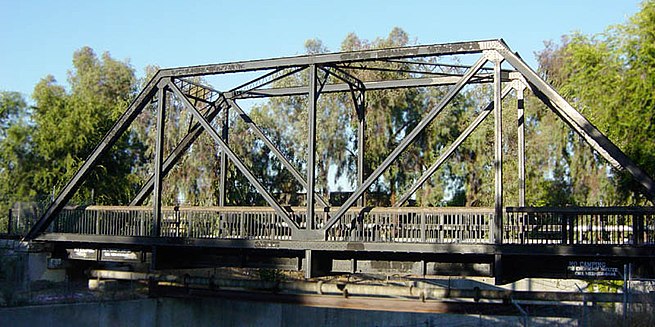
Main Difference
The main difference between Joist and Truss is that the Joist is a horizontal structural element transferring load from flooring to beams, typically running perpendicular to beams and Truss is a structure that consists of two-force members only
-
Joist
A joist is a horizontal structural member used in framing to span an open space, often between beams that subsequently transfer loads to vertical members. When incorporated into a floor framing system, joists serve to provide stiffness to the subfloor sheathing, allowing it to function as a horizontal diaphragm. Joists are often doubled or tripled, placed side by side, where conditions warrant, such as where wall partitions require support.
Joists are either made of wood, engineered wood, or steel, each of which have unique characteristics. Typically, wood joists have the cross section of a plank with the longer faces positioned vertically. However, engineered wood joists may have a cross section resembling the Roman capital letter “I”; these joists are referred to as I-joists. Steel joists can take on various shapes, resembling the Roman capital letters “C”, “I”, “L” and “S”.
Wood joists were also used in old-style timber framing. The invention of the circular saw for use in modern sawmills has made it possible to fabricate wood joists as dimensional lumber.
-
Truss
A truss is an assembly of beams or other elements that creates a rigid structure. In engineering, a truss is a structure that “consists of two-force members only, where the members are organized so that the assemblage as a whole behaves as a single object”. A “two-force member” is a structural component where force is applied to only two points. Although this rigorous definition allows the members to have any shape connected in any stable configuration, trusses typically comprise five or more triangular units constructed with straight members whose ends are connected at joints referred to as nodes.
In this typical context, external forces and reactions to those forces are considered to act only at the nodes and result in forces in the members that are either tensile or compressive. For straight members, moments (torques) are explicitly excluded because, and only because, all the joints in a truss are treated as revolutes, as is necessary for the links to be two-force members.
A planar truss is one where all members and nodes lie within a two-dimensional plane, while a space truss has members and nodes that extend into three dimensions. The top beams in a truss are called top chords and are typically in compression, the bottom beams are called bottom chords, and are typically in tension. The interior beams are called webs, and the areas inside the webs are called panels, or from graphic statics (see Cremona diagram) polygons.
-
Joist (noun)
A piece of timber laid horizontally, or nearly so, to which the planks of the floor, or the laths or furring strips of a ceiling, are nailed.
-
Joist (verb)
To fit or furnish with joists.
-
Truss (noun)
A bandage and belt used to hold a hernia in place.
-
Truss (noun)
A structure made up of one or more triangular units made from straight beams of wood or metal, which is used to support a structure as in a roof or bridge.
-
Truss (noun)
A triangular bracket.
-
Truss (noun)
An old English farming measurement. One truss of straw equalled 36 pounds, a truss of old hay equalled 56 pounds, a truss of new hay equalled 60 pounds, and 36 trusses equalled one load.
-
Truss (noun)
A bundle; a package.
-
Truss (noun)
A padded jacket or dress worn under armour, to protect the body from the effects of friction.
-
Truss (noun)
Part of a woman’s dress; a stomacher.
-
Truss (noun)
A tuft of flowers formed at the top of the main stem of certain plants.
-
Truss (noun)
The rope or iron used to keep the centre of a yard to the mast.
